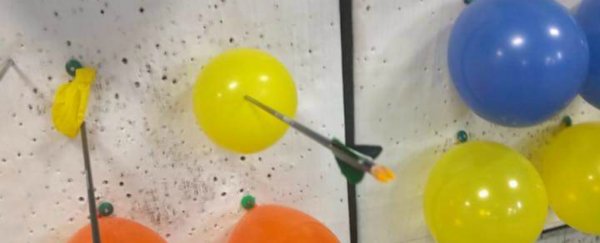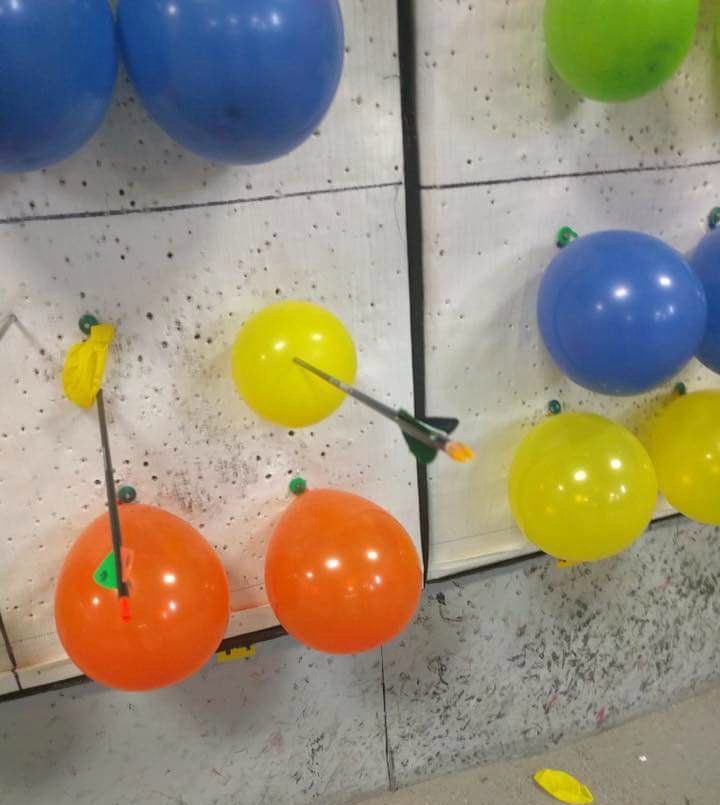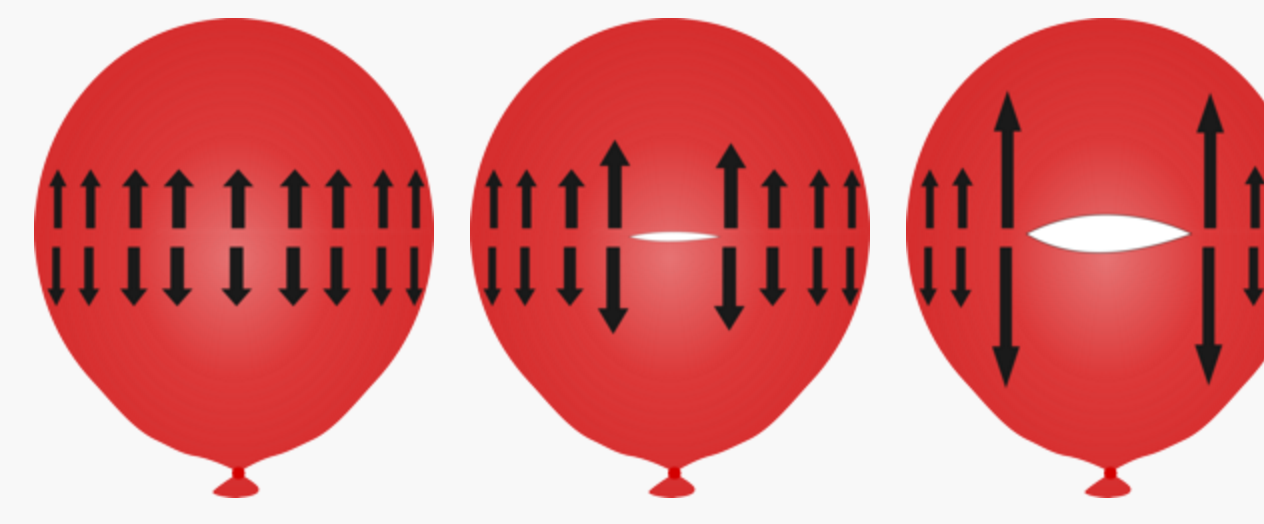Earlier this week, this maddeningly frustrating image of an un-popped balloon being pierced by an arrow at an archery club went viral on Reddit - because, come on, what the hell is going on here?
Before you get started about how this is an old trick used to rig carnival games, the guy who actually took the photo, evilbytez, also established some context: the balloon was a plain, unaltered balloon, blown up by humans, and the arrow was shot by an 11-year-old from a distance of about 10 metres in an indoor space. It was part of a club activity at Brockley Archery Club in Ontario, Canada, and plenty of other balloons were popped fine that day.
By all accounts, this one really should have burst too - after all, the kid nailed it fair and square with his arrow - but on this occasion, it didn't. And (as far as we can tell from an image uploaded to the Internet) that's because a whole series of conditions lined up to rob the young archer of a victory. Thank you, physics.
So how exactly did the balloon survive?
While it's impossible to say for sure without examining the situation further than this one photograph, this looks like a pretty classic classroom science experiment called the balloon shish kebab, where you pierce a balloon with a kebab stick - just like this arrow did - without popping it.

To understand how that works, you first need to understand why a balloon pops in the first place. As you blow one up, you're increasing the air pressure on the inside with your breath, and that pressure is stretching the rubber until it becomes thinner and thinner.
As you know, if you prick that rubber with a pin, the whole thing will pop, because all the tension that should have been supported by the pricked rubber is now transferred to the edges of the hole. That force is too large for it to handle in its stretched state, so the rubber rips violently until enough air escapes to remove the internal force.
This illustration by The Naked Scientists shows what that looks like:
But the rubber isn't equally stretched all over a balloon. In fact, you'll notice that at the top and at the bottom, right near the mouth, balloons are usually darker in colour, where their rubber is more slack. "This means that the rubber at the edges of the hole can stretch significantly so the force is shared out over a large area," The Naked Scientists explain.
So if you put a skewer (or an arrow) in at one of these dark points, and then poke it out the least-stretched area on the other side, you'll easily be able to leave the balloon un-popped. Of course, it may deflate slightly as air escapes, but if you leave the arrow in there, it should seal up most of that leak.
And this appears to be what's happened to this poor archer - who, to be honest, should be pretty happy about the whole thing, because managing to hit a balloon at precisely the right angle to not pop it is far more rare than just shooting one of the weak, over-stretched rubbery sides. Well done, kid.
And just in case you were wondering, this is what it looks like when a man sits inside a giant water balloon and then pops it - in glorious slow motion.




